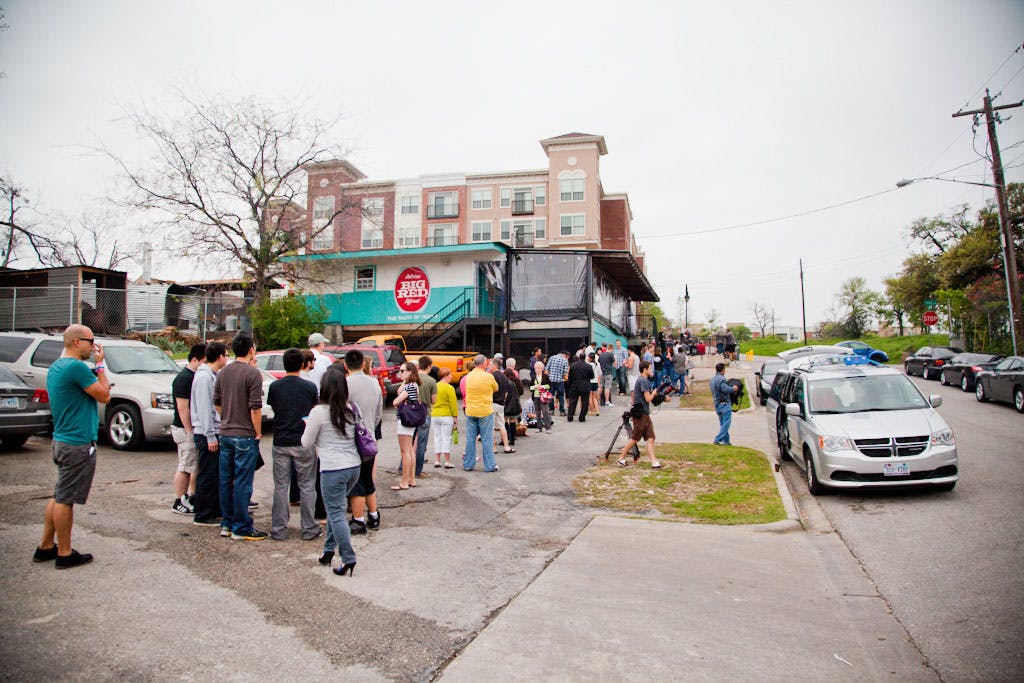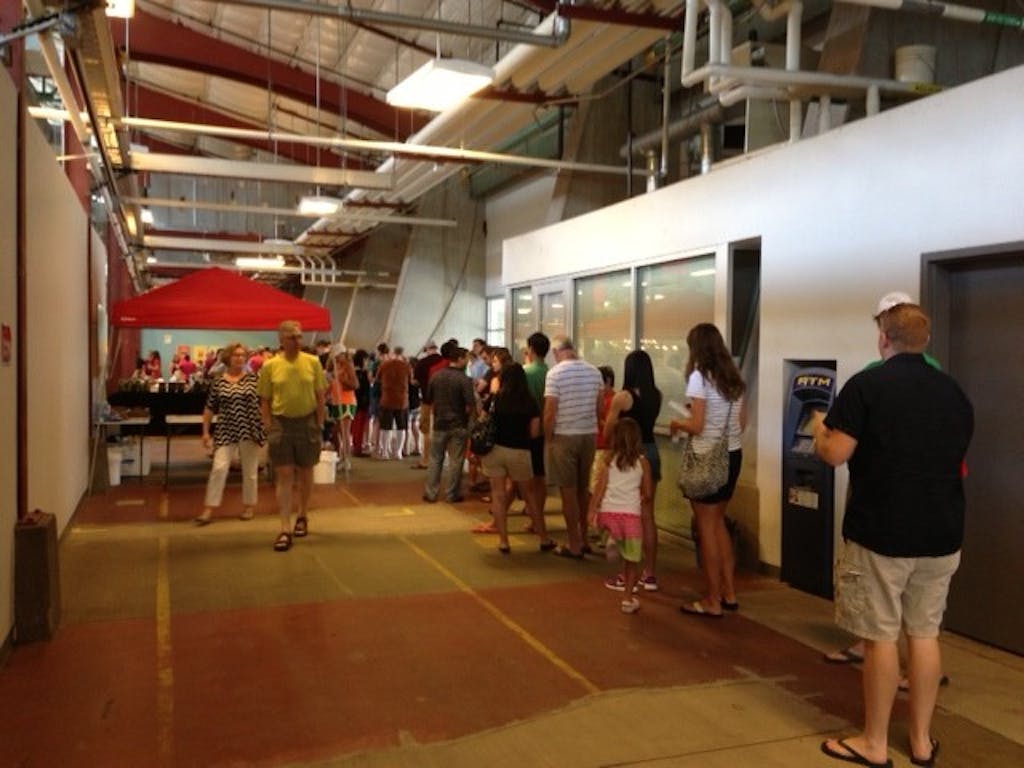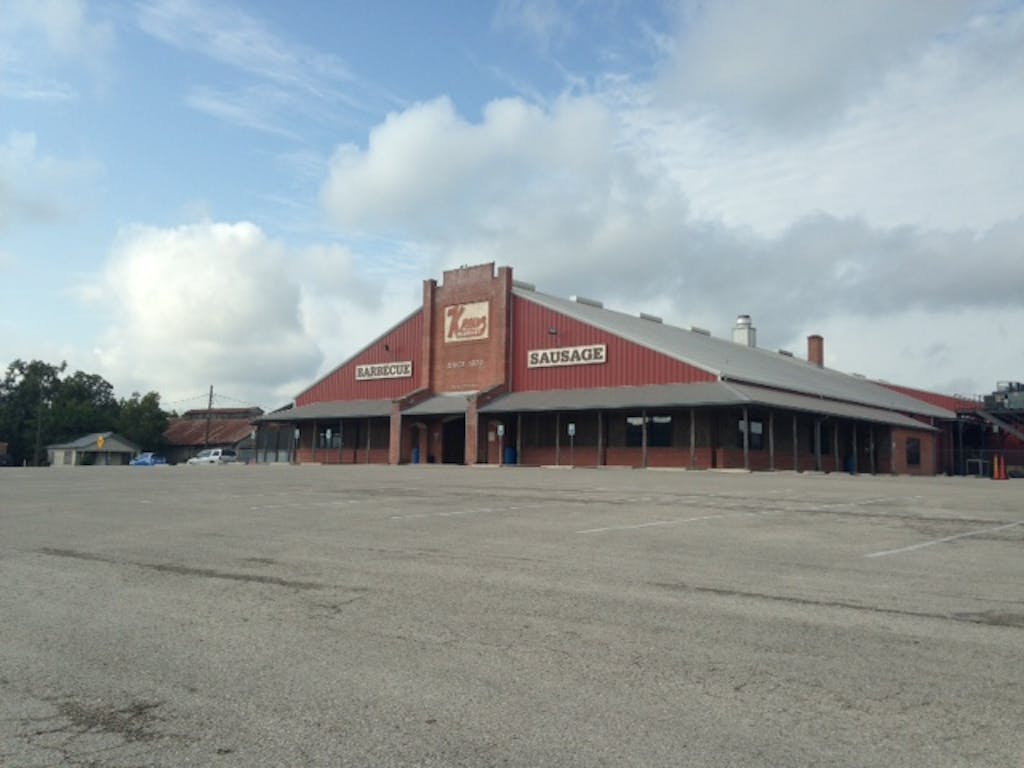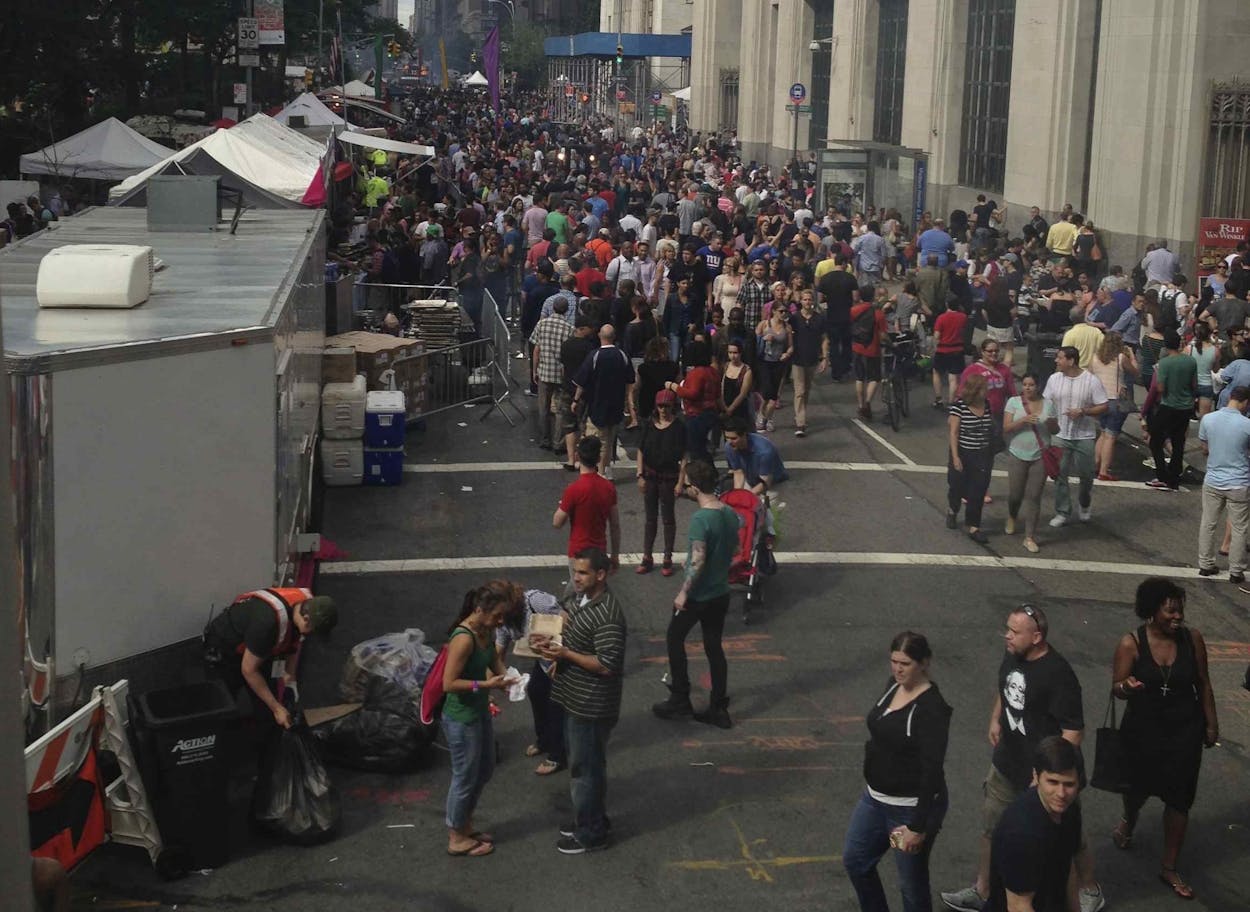“Line are overrated.” This is the conclusion of economist Tyler Cowen in a recent article where he shared some of his principles for finding good restaurants. For Cowen, standing in line is a conformist activity, and the presence of a line is a not a good indicator of the quality of food inside. This principle was aimed at all restaurants, especially those that manufacture an unnecessary line, but it got me thinking: what does a line, or lack thereof, say about a barbecue joint and how does it affect the psychology of picking where we eat?

Let’s first address the most notorious line in Texas barbecue. The line at Franklin Barbecue is a divisive subject. I’m sure many people are drawn to eat there because of the spectacle of hundreds of hungry customers standing outside waiting to get in. Conversely, others choose never to visit Franklin because of the spectacle of hundreds of hungry customers standing outside waiting to get in. With at least a two-hour wait required on any day to eat, Franklin Barbecue is the most popular barbecue restaurant—arguably, the most popular of any cuisine—in Texas. Also, given the recent crowning by this publication of Franklin Barbecue as the best barbecue joint in the state world, you’re not going to see the food quality questioned here. It takes patience, but those in line will find gold at the end of that rainbow.
Another notable line is the one at Snow’s BBQ in Lexington, which gained worldwide acclaim in the summer of 2008 after Texas Monthly christened it the best barbecue in the state. After the accoldaes, the lines grew quickly. Unfortunately they didn’t have any infrastructure to deal with it. The dining room is tiny. Maybe six people can wait inside, so the line quickly spreads to the porch and down the ramp. From the time they open until they’re sold out on Saturdays, there will be a line out the door, a visible indicator to people driving by how busy a place is and how long one might wait.
So what about barbecue joints with interior lines? At Kreuz Market, the entire line is inside, and because of the restaurant’s layout, you don’t know until you’ve passed through the vestibule if you’re going to be eating in five or 45 minutes. Once you get inside, you’ve parked, you’ve taken a photo of the wood pile, the smoke flavors have infiltrated your olfactory senses: you’re pretty much committed. But I also think the fact that the Kreuz line is tucked inside the building keeps it from being a discussion point. Nobody complains about the long lines at Kreuz, even though they exist every weekend. That was also the case with Louie Mueller Barbecue in Taylor, that is until a much discussed complaint by an Austin American-Statesman columnist about the long wait a few days after they were named one of the best barbecue joints in the state. Louie Mueller can accommodate a good crowd inside the doors, so it takes a lot to get a line out on to the sidewalk. It still happens, and owner Wayne Mueller takes note of those occasions. I doubt anyone driving by in Taylor, Texas, decides to hop in line those days just because it looks like the popular thing to do.

The lines don’t get out the door in cavernous Shed #2. That doesn’t mean there aren’t a hundred or more customers in line at Pecan Lodge in Dallas on a given Saturday, but it’s another hidden wait. It’s amusing to just watch people walk in the door and realize how long it will be until lunch. The lines got so long there that owners Justin and Diane Fourton added a second cash register (called the Express Lane) for meat orders over five pounds. That has added some relief, but you still need to plan ahead to get lunch at Pecan Lodge. That’s also true for joints like John Mueller Meat Co. and la Barbecue in Austin and Lockhart Smokehouse in Dallas where weekend lines are routinely thirty minutes or longer.
All of these joints are considered as having some of the best barbecue in Texas, and so to me it makes sense that they all have significant lines. So I asked Cowen about long queues specifically for what has been determined to be great barbecue. He mostly stuck to his point, writing “’Overrated,’ yes, but not worthless as an indicator!” I would agree on both accounts. A line manufactured by the business owner to gin up interest was part of what Cowen was warning about. GQ food critic Alan Richman recently encountered this in New York while waiting for a sandwich at a Mighty Quinn’s Barbecue food truck. “A woman manning their stand refused to give me a sandwich. She insisted that I begin a line, explaining that once it was of substantial length, I would be served.” Mighty Quinn’s, as Richman alleged, was forcing the creation of a visible line of noticeable length possibly steal away potential customers for Smorgasburg. I’ve never seen this sort of queue in Texas, but that kind of concerted marketing tactic doesn’t strike me as something we’d see at a Texas barbecue joint—most pitmasters are in it to make great smoked meat, not a spectacle.
But to be honest, I’ve rarely stood in a significantly long line at a barbecue joint and been met with disappointing food. The only one that comes to mind was Sean’s Mesquite Pit in Decatur. I didn’t know what to expect from the barbecue when I got there, but once I saw all of the other people waiting (I spent about twenty-five minutes in line) I had a heightened expectation for good barbecue. I guess I allowed myself to be misled by just the presence of a line, but others might see all those people and just decide to leave for a less popular restaurant.

This discussion is really one of supply and, whether actual or perceived, demand. Some economists argue that a barbecue joint should just raise their prices to depress demand until the line is nearly eliminated. They would still get the same profits, but from fewer people who were willing to pay for it. I don’t see how that method would work very well in practice, but a University of Chicago study from 1991 (hat tip to @dallasfoodorg for alerting me to it) investigates how high those restaurant prices could be raised before all the customers bailed. There’s fragility between being the “in” place and one on the way “out”. The author argues that a line can help a restaurant stay “in” because of the perceived demand that line expresses. Keeping people waiting isn’t always bad for business. I would also note that raising the price of barbecue because of a line on the weekends is going to make a whole lot of regular weekday customers unhappy at a place like Kreuz Market where you can stroll right in on a Monday. The study also notes that “economists have paid unsufficient attention to direct social influences [like lines] on behavior.” It seems Cowen is filling that gap.

The second principle Cowen discusses in his article is “totally empty restaurants are (often, not always) underrated.” This is an argument that I can agree with from personal experience. I’ve eaten at many hundreds of barbecue joints, and I can tell you that the hidden gems are just that—unknown restaurants with empty dining rooms and great food. I wouldn’t make any of those ‘discoveries’ if I were averse to empty restaurants. I mentioned earlier that barbecue joint owners aren’t always the best marketers. Some who struggle still consider the “OPEN” sign to be the only advertising they need. Until the word gets out, they’re going to be pretty empty. This is why I’m usually so hopeful visiting an uknown joint for the first time. There’s at least a decent chance that I’ll find something great to return for, and maybe I’ll be the first to tell the world.
If you’re going to judge the quality of a barbecue joint by an empty dining room, you also need to consider other factors. Barbecue is a lunchtime food in Texas, so if you’re not there during the lunch rush, you might have missed a huge crush of customers that were there a few hours before your visit. Also, many barbecue businesses focus on to-go orders. This doesn’t create long lines or a busy dining room, but that doesn’t mean demand is low.
Line or no line, a line from Cowen rings especially true for barbecue. “[M]ost great food is not in fact that profitable.” With the low profit margins in the barbecue business, that means you need heavy volume to make any real money. If that means waiting in line for a good combo plate, then so be it.
- More About:
- Snow's BBQ
- Franklin Barbecue








